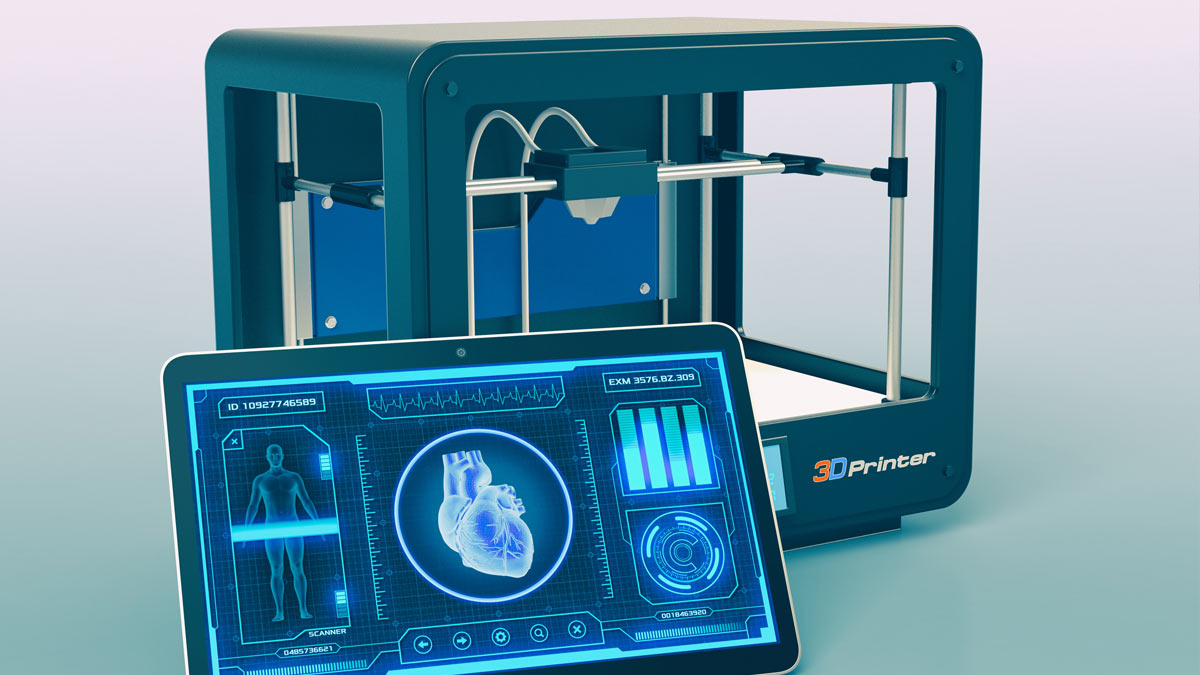In the market for a new spleen? How about a body like a young Arnold Schwarzenegger? Or maybe the key parts to build your own espresso machine?
You won’t be able to get these any time soon at the Medical University of South Carolina. As for the third option, it would be a lot easier – and cheaper – to just visit your local coffee shop, at least according to Dr. Michael Yost, Ph.D., a professor in the Department of Surgery.
Dr. Yost is also vice chairman of research in the Department of Surgery and a fellow of the National Academy of Inventors and the American Institute of Medical and Biological Engineers. By trade, he is a biomedical/chemical engineer. At MUSC, his focus is on the cutting-edge field of biofabrication and tissue engineering, which involves the 3D printing of living tissue.
It all seems very “space age” and, in fact, NASA is keenly interested in the work of medical scientists such as Dr. Yost in connection with America’s proposed manned missions to Mars. On a voyage of 140 million miles, 3D bioprinting will be critical if an astronaut needs a skin graft or suffers a musculoskeletal injury during the mission.
Right here on our own planet, teams of general surgeons, transplant surgeons, immunologists, cell-signaling biologists and molecular biologists are absorbed in unraveling the mysteries of taking a small quantity of a patient’s own cells, expanding them, combining them with printable biomaterials and re-introducing them into the body, where they will be grafted and grow to replace losses or defects due to disease or trauma.
At MUSC, the most successful such program is targeted at the skeletal muscles.
“This is living tissue. It’s not artificial. It’s alive and can grow and function just like normal tissue,” Dr. Yost said.
At the skeletal muscle level, new complexities arise.
“We take a small biopsy of the muscle, isolate the satellite or pre-cursor cells, expand them in a culture with a particular mixture of vascular epithelial cells and connective tissue – fibroblast cells – then reintroduce that into the body with a graft to correct that biometric defect,” Dr. Yost explained.
To date, several animal studies have proven this technique to be effective. More research needs to be done, but human studies are within reach.
While Dr. Yost believes that interest in regenerative medicine and scientific experimentation is growing exponentially, replicating entire organs is still well over the horizon.
“The complexity of organs such as the liver and the kidneys creates a host of difficulties. We would love to be able to replace whole organs, but that presents a formidable challenge to medical science at the present time,” he noted. “Fifteen years ago, some people were predicting that we would have been able to 3D print a functioning heart by now. It hasn’t happened yet. But we’re pretty close on one other major organ – the skin.”
In fact, it was skin that first spurred Dr. Yost’s interest in the field of regenerative medicine. When one of his sons was 6 years old, a vicious dog bite lacerated his cheek. A plastic surgeon took a flap of skin for a graft to the boy’s face, warning that there was a chance that the graft might die.
In his son’s case, the graft took and survived. But the experience led Dr. Yost to think that “there has to be a better way to do this.” And now there is.
The bioprinter that Dr. Yost and his team utilize in their practice and their experimentation is not something to fit onto your desktop or that could be purchased for a few hundred dollars online.
“It’s about the size of two bookcases,” he said, “stacked together and about 7 feet tall. Most of this is filters and enclosures. The 3D robot itself is fairly small, about a 2-foot cube.”
The “cabinet,” for lack of a better term, cost roughly $250,000 and is supplemented by another $100,000 in equipment. The robot component, he added, can cost between $50,000 and $600,000. More widespread demand and miniaturization, Dr. Yost believes, will eventually drive the cost of bioprinting down, just as new breakthroughs will make it more generally available.
But while you still may not be able to get a 3D bioprinted spleen, a Schwarzenegger physique or components for brewing a cappuccino (at least not from MUSC), you now can hit the street and run like the wind in a pair of 3D printed running shoes – more like sandals, actually – that will disappear in a few months.
Dr. Yost participated in an experiment that led to the creation with his MUSC colleague, Mark Semler, chief executive office of the Zucker Institute for Applied Neurosciences, of entirely compostable running footwear.
Semler built the sandals on his own personal 3D printer with a bio-compostable plastic manufactured into a filament, and Dr. Yost called it “a learning process for using biodegradable filament which also has medical applications.”
Semler finished the New York Marathon last year in his 3D-printed sandals. But three months later – unlike ordinary running shoes, which can survive on the trash heap for up to 1,000 years – they had returned to dirt and, to steal a phrase, were “gone with the wind.”
By Bill Farley







